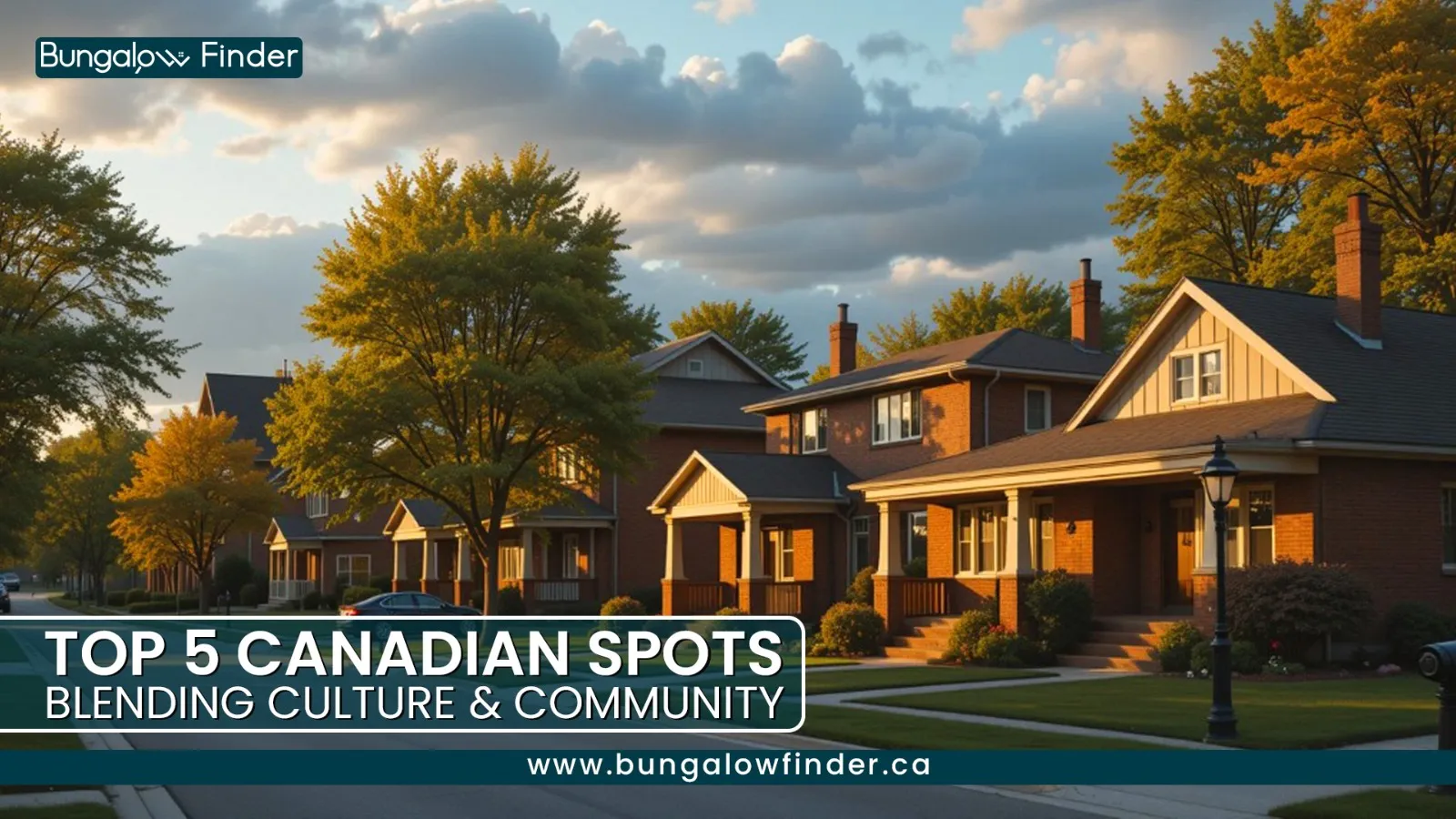How Culture and Community Shape the Canadian Housing Market
Discover five Canadian cities where culture and community shape real estate. Learn how lifestyle adds value beyond price, size, or square footage.

Not every Canadian city feels the same. Some stand out because neighbours know each other, traditions matter, and the streets are alive with music, food, or art. These places shape the Canadian housing market in a quiet way. Buyers searching for Canadian homes for sale often lean toward cities where lifestyle is as strong as the bricks and mortar.
Community Matters More Than Numbers
Talk about the Canadian housing market and you’ll usually hear price graphs, mortgage chatter, and sales counts. That’s the surface. But people don’t actually buy data. They buy into neighbourhoods. They buy into how a place feels on a Saturday morning, or how safe it feels to walk home after an evening concert.
This is why some cities punch above their weight. They may not have the biggest skylines or the most expensive condos, but they have something people quietly put first: community. And that spirit often holds real estate steady when other markets wobble.
Here are five Canadian spots where culture and community aren’t extras — they’re the foundation.
1. St. John’s, Newfoundland & Labrador
St. John’s has its own rhythm. The brightly painted houses on the hills aren’t just for postcards. They belong to people who will probably wave if you walk by. In pubs, live music spills out almost nightly, and it’s not staged for tourists. It’s just how evenings go here.
The city is built on gatherings. Kitchen parties, small festivals, neighbourhood events — they feel homegrown and inclusive. For someone moving in, that kind of openness makes settling easier.
On the Real Estate Side
St. John’s is still one of the more affordable cities in the country. That’s rare in today’s housing market. For sellers, a simple home-selling tip is to lean into lifestyle when listing. People aren’t just comparing square footage here. They’re comparing how it might feel to walk out the door and instantly be part of something.
2. Halifax, Nova Scotia
Halifax wears its heart on its waterfront. The Seaport Farmers’ Market is the obvious example — it’s been running since the 1700s and still pulls people every weekend. You don’t just shop there; you bump into your neighbours, chat with farmers, maybe catch a busker or two. It feels like a community hub disguised as a market. Nova Scotia shows its community spirit best along the waterfront, where markets, music, and neighbours come together in an open and welcoming way.
Walk the harbour and you’ll notice the same thing. Music on the boardwalk, public art, and a crowd that actually stops to listen. Halifax is open in that way.
Factor | Insight |
Market Position | Growing but still more affordable than big metros |
Cultural Anchor | Seaport Farmers’ Market + waterfront life |
Buyer Interest | Coastal living with city convenience |
On the Real Estate Side
The city has been gaining momentum. Prices are rising, especially near the water, but compared to Toronto or Vancouver, it still feels within reach. Buyers look at Halifax because it offers both lifestyle and relative affordability. Sellers can use that blend as leverage, especially for condos or family homes within walking distance of the waterfront.
3. Québec City, Québec
Québec City is layered with tradition. The Winter Carnival is probably the most famous event, but here’s the thing — it isn’t just for tourists. Locals count down to it, kids grow up with it, and families treat it as part of their calendar year. That’s what makes the city’s culture feel real, not staged.
Even on ordinary days, the city feels rooted. Cobblestone streets, French cafés, open-air art — it’s part of daily life, not just heritage preservation.
On the Real Estate Side
The housing market here is steady, not overheated. Families like it for the mix of history and liveability. Retirees like it for the slower pace. Sellers near Old Québec or close to seasonal festivals can highlight that in their listings. One home-selling tip here is simple: talk about the street life. Buyers want to picture themselves stepping into a neighbourhood that already has character.
4. Winnipeg, Manitoba
Winnipeg is one of the most multicultural places in Canada, and Folklorama is the clearest proof. Every summer, for two weeks, local cultural groups open their pavilions to the public. Each one offers food, music, and performances that reflect their heritage. It’s more than just a festival — it’s the city showing how different communities come together to share who they are. Winnipeg, the capital of Manitoba, celebrates diversity year-round through festivals, food, and culture that bring communities together in a welcoming way.
That spirit carries through the year. Restaurants and arts centres give each neighbourhood its own flavour. For newcomers, it means an easier time finding a piece of home in a new city.
On the Real Estate Side
Winnipeg’s homes are still among the most affordable in Canada. That’s pulling in first-time buyers and families who are priced out elsewhere. Sellers should remember that culture sells as much as square footage here. A listing that points out nearby cultural hubs, restaurants, or festivals has an edge.
5. Stratford, Ontario
Stratford is small but has a strong reputation thanks to the Stratford Festival. But it’s not just an annual show that comes and goes. The entire town ties itself to the theatre. Locals volunteer, businesses adjust their schedules, and you can feel the festival woven into daily life.
That kind of cultural backbone makes Stratford attractive for people who want something beyond cookie-cutter suburbia. You get a small town that is quiet and has an active, artistic core.
On the Real Estate Side
Homes near the festival area or downtown cafés are more sought-after. They hold value because people want to be close to the action. For sellers, one good home-selling tip here is to tell the story of the neighbourhood. A buyer moving from outside Stratford will respond to that cultural picture.
Why Culture Changes Housing Value
All five of these places share something obvious when you look closely: they give people a reason to stay. Community events, traditions, and culture glue a city together. That stability shows up in the Canadian housing market.
A neighbourhood with active festivals, strong markets, or a sense of identity tends to hold value better. Buyers are drawn to places where they see a future for themselves, not just a building. And sellers can use that. Talking about the local scene, instead of only square footage and appliances, makes a listing stand out in a crowded market.
Final Word
Real estate is never just walls and roofs. It’s the street outside, the neighbour who stops to chat, and the festival that comes every year. From St. John’s to Stratford, culture and community spirit are part of what make a home worth more in the long run.
So if you’re searching through Canadian homes for sale, don’t just filter by price or lot size. Ask: What’s the heartbeat of this place? Because in the end, that’s what gives property lasting value in the Canadian housing market.
FAQs
What are the top 5 cultures in Canada?
The largest cultural groups are English, French, Indigenous, Chinese, and Indian. Each adds to Canada’s traditions, festivals, and everyday life.
What is the most magical place in Canada?
Banff National Park in Alberta is often seen as the most magical, with its turquoise lakes, mountain peaks, and breathtaking scenery.
Which six cultural areas are located in Canada?
The six cultural areas are the Arctic, Subarctic, Northwest Coast, Plateau, Plains, and Eastern Woodlands, rooted in Indigenous history.













